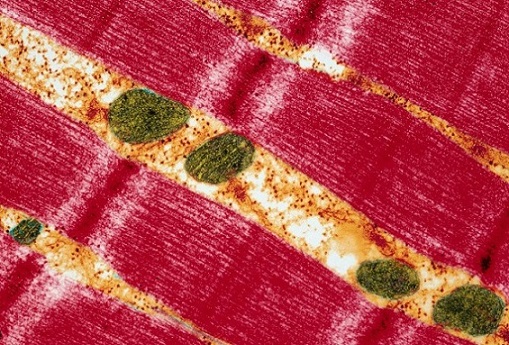Nikhil Prasad Fact checked by:Thailand Medical News Team Aug 26, 2025 4 months, 1 week, 3 days, 17 hours, 53 minutes ago
Medical News: A New Breakthrough Model
A groundbreaking international study has revealed how the muscles of people suffering from chronic fatigue syndrome (CFS) and Long COVID enter a dangerous cycle of short-lived adaptation followed by collapse. Scientists created a new 3D laboratory model of human skeletal muscle and exposed it to blood from patients with CFS and Long COVID. This
Medical News report shows how muscle tissues first attempt to fight back against stress, but then deteriorate over time.
 Muscle Weakness in Long COVID Linked to Hidden Energy Crisis
Muscle Weakness in Long COVID Linked to Hidden Energy Crisis
The research was conducted by experts from the Institute for Bioengineering of Catalonia (IBEC), Barcelona Institute of Science and Technology (BIST), Institut d’Investigacions Biomèdiques August Pi i Sunyer (IDIBAPS), University of Barcelona, Hospital Clinic of Barcelona, Vall d’Hebron University Hospital and Research Institute, CIBERER—Spanish Biomedical Research Centre in Rare Diseases, and the Centro Nacional de Análisis Genómico (CNAG), Universitat de Barcelona, and ICREA-Institució Catalana de Recerca i Estudis Avançats.
Muscles in Distress
When healthy muscle tissues were bathed in patient blood samples for 48 hours, their strength dropped dramatically. The tissues tired quickly, could not sustain contractions, and showed the same weakness and “push-crash” cycle that patients often describe. In other words, the muscles briefly worked harder, then collapsed.
Gene analysis revealed why. The tissues ramped up protein production, activated stress pathways, and tried to switch to alternative energy sources. In CFS, there was an abnormal remodeling of muscle fibers, while in Long COVID, mitochondria—the cell’s energy factories—were pushed into overdrive. But instead of producing balanced energy, these processes fueled instability.
Energy Factories Under Siege
Microscopic studies showed muscle fibers swelling abnormally (hypertrophy) and mitochondria fusing into tangled networks. At first this looked like a protective measure, but the excess fusion meant the cells were under stress. Oxygen consumption spiked, but the energy output did not match the demand. This mismatch is exactly what patients experience as fatigue.
When tissues were kept in patient blood for longer—up to 144 hours—the picture worsened. Muscles shrank, fibers fragmented, and mitochondria broke apart into distorted ring-like shapes. These structural breakdowns mirror the progressive loss of strength and stamina reported by people with Long COVID and CFS.
Why It Matters
The study provides the first evidence that muscle weakness in these illnesses is not due to inactivity or imagination, but to a biological “energy crisis.” Muscles try to adapt, briefly boosting energy metabolism, but this leads to exhaustion and collapse. Importantly, the findings give weight to patie
nt reports of post-exertional malaise, where even minor effort can trigger long periods of weakness.
Looking Ahead
The researchers highlight that this new 3D muscle model offers a safe and reliable way to study disease progression without harming patients. It also shows that targeting mitochondrial stress and abnormal protein turnover could be key to future therapies. While the study involved a small group of patients, its findings open an entirely new path for understanding how chronic fatigue and Long COVID damage the body.
The study findings were published in the peer reviewed journal: Biofabrication.
https://iopscience.iop.org/article/10.1088/1758-5090/adf66c
For the latest COVID-19 News, keep on logging to Thailand
Medical News.
Read Also:
https://www.thailandmedical.news/news/covid-19-can-trigger-shocking-condition-called-heterotopic-ossification-where-bone-grows-in-muscles-and-organs
https://www.thailandmedical.news/news/covid-19-causes-skeletal-muscle-and-mitochondrial-damage-that-contributes-to-myalgic-encephalomyelitis-chronic-fatigue-syndrome
https://www.thailandmedical.news/news/long-covid-effects-on-muscles-and-post-exertional-fatigue
